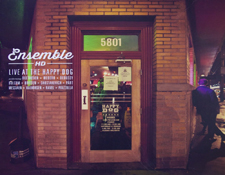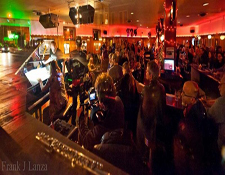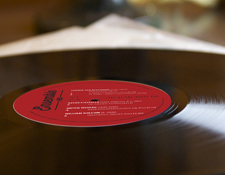It’s the time of year for saving money!

Recently, one of my writing associates here at Audiophilereview.com, Roger Skoff, wrote an interesting article, “Go For It”, about sound and how ultimately there is a lot of guess work involved in making a recording that sounds good to the listener. The article also explores how one person’s definition of good is likely different than the next so that at the end of the day, he encourages, listeners should set up their systems any way they want, EQ-ing as they desire or need given their listening environment, etc. All fine concepts.
One thing he doesn’t really touch on however is the impact that actual room in which a performance takes place has on the final recording, and how that itself can dramatically color the sound of the recording being made. You can have the best microphones in the world and top notch engineers working for you but at the end of the day if the room sounds a certain way, it will definitely come out in the final recording. And that is not a bad thing necessarily. But it is important to understand when appreciating a particular piece of music. Part of the joy of listening to a great album like The Allman Brothers at Fillmore East is how it captures the flavor of that venue.
Take the case of the acclaimed Ensemble HD which has issued a lovely audiophile-worthy two LP set called Live at the Happy Dog. This album is part of a grand (and successful) experiment to bring classical music out of the sacred halls of the symphony and opera houses down to a place where the average person might be more likely to go: in this case, a bar. This recording is part of a nation wide effort to bring classical music to non-traditional venues and new audiences, driven by an organization called Classical Revolution (sponsors of this concert). These performances have even been featured on NPR among many other outlets.
So, yes, this is is an audiophile recording of lovingly performed chamber music created and led by The Cleveland Orchestra’s principal flautist Joshua Smith… recorded in what amounts to essentially a corner pub.
I inquired about the making of this album and received this interesting information from recording engineer Thomas Knab:

“The Ensemble HD recording was made with a minimal mic-ing approach using pair of vintage Schoeps vacuum tube microphones as the main stereo ORTF recording pair. The location of the stereo pair was meticulously optimized in relation to each of the different Ensemble HD performer combinations. A pair of Coles 4038 ribbon microphones were sparingly used as spot mics to support some soloists. This approach allowed capturing at a close distance the natural instrument sounds, performance balances and performer locations, while also picking up exciting Happy Dog audience and ambience. The small bar stage was covered in plywood to reflect more instrument sound up into stereo pair, and old bar table tops were placed behind cello to support low end. Excellent microphone preamps, cabling and digital recording electronics were then used for the 96/24 high resolution session recording. A minimal amount of music editing and mastering was done at 96/32 bit floating point resolution. The 96/24 stereo master was then used for cutting the lacquer using a finely-tuned Neumann VMS70 cutting lathe. 180 gram vinyl was used for pressing discs, which actually average closer to 190 grams, that are lower noise and more robust and stable. The goal was to make an intimate and direct sounding recording taking advantage of the sonic virtues of a minimal vacuum tube front end and vinyl delivery to present the amazing sounds, subtle balance changes and dynamic musical interplay happening live on the stage of the Happy Dog, not in a concert hall or recording studio.”
And that is exactly what you get in this recording. You hear not only the instruments and the wonderful interplay between the musicians (and at times, the audience) but you also feel like you are there in the club! And unlike hearing a jazz combo or a rock band in a club, listening to classical musical in that environment gives the final recording a distinctive texture. Along the way we are treated to wonderful performances of choice pieces by Beethoven, Piazolla, Webern, Britten, Ravel, Debussy, Shostakovich and more, all with that sonic footprint of being in a club with an audience out to have a good time.
What’s not to like? Just go into this recording knowing that it is not going to sound like a recording made at Carnegie Hall, Davies Symphony Hall or a fancy studio sound stage.
Me personally, I am quite attuned to this concept, having not only recorded my band hundreds of times in many clubs all over California (and NJ for that matter) and hearing how they all sound different dependent largely upon the acoustics of the club (and where my mics or camcorder was set up — yes, even on a camcorder mic, the sound varies from location to location). Possibly more influential on my live listening skills, I got attuned to the nuance of different hall sounds while exploring hundreds of different Grateful Dead concert recordings made by fans and the band. Yes, folks, I am a proud Dead Head of long standing. The Dead (and their crew) are widely acknowledged pioneers in live concert sound engineering. The acoustics of many of the venues they played colored on the recorded performance, be it from the Shrine Auditorium in LA circa 1968 or the legendary radio broadcast of the 1975 show from San Francisco’s Great American Music Hall.

My old band “ing” recorded its last album (Stagger & Belligerence, now being remastered for an LP reissue, btw) at the legendary Plant Studios in Sausalito (basic tracks and final mix). I can attest to the fact that the room we recorded in — the same space where Fleetwood Mac made Rumors, Van Morrison made Moondance and Stevie Wonder made Songs in the Key of Life — has a sound and energy all its own, which influenced the final sound of our album.
So, now, perhaps, when you listen to a recording, you’ll be taking note of the sound of where the recording was made and whether you like that sound or not. There is more to it than just throwing up a few microphones.
Check out Ensemble HD’s live recording from the Happy Dog, not only for the fine performances but also to be transported to the corner pub where they performed. Its a fun experience!
Mark Smotroff is a freelance writer and avid music collector who has worked for many years in marketing communications for the consumer electronics, pro audio and video games industries, serving clients including DTS, Sega, Sony, Sharp, AT&T and many others. Mark has written for EQ Magazine, Mix Magazine, Goldmine/DISCoveries Magazine, BigPictureBigSound.com, Sound+Vision Magazine and HomeTechTell.com. He is also a musician / composer who’s songs have been used in TV shows such as Smallville and Men In Trees as well as films and documentaries. Mark is currently rolling out a new musical he’s written. www.smotroff.com






